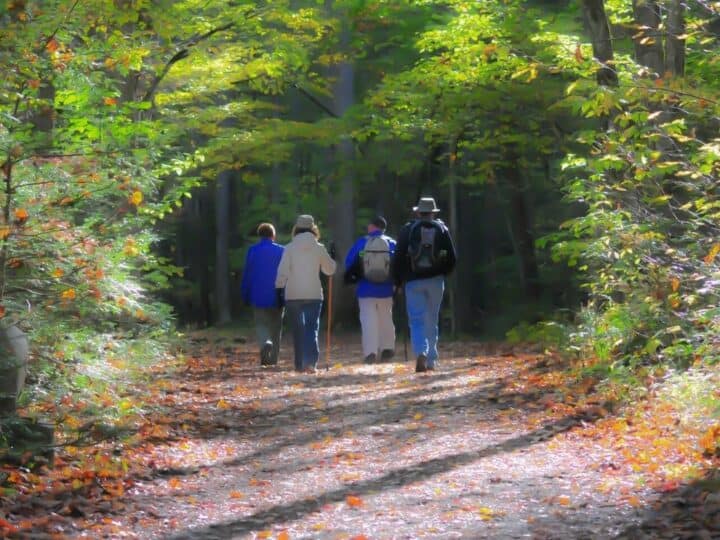What Do the Climbing Terms “Redpoint”, “Pinkpoint”, “Flash,” and “Onsight” Mean?
Every sport has its jargon, some more than others.
Setting aside those which are language-dependent on where they originated, sports like karate and tae-kwon-do, for example, there are some which are so specialized that over the years they have been forced to create so many new terms that to the layman, listening to aficionados jabbering away might as well be a conversation held in Greek.
In this article, you and I will not delve into the niceties of the myriad neologisms employed in rock climbing, so, unfortunately, you will have to continue to wonder what names like ‘bouldering,’ ‘sport,’ and ‘trad’ mean.
On the other hand, if you are curious about the meaning of ‘redpoint,’ ‘pinkpoint,’ ‘flash,’ and ‘onsight,’ you’ve come to the right place.
What Do the Climbing Terms ‘Redpoint’, ‘Pinkpoint’, ‘Flash,’ and ‘Onsight’ Mean?
Onsight means going through a route without knowledge of it. Flash climbing means climbing the route with some prior knowledge. You do redpoint climbing if you climb the route after some practice. Pinkpoint climbing means using quickdraws during the climb.
Onsight
When a climber takes a route and climbs it without previous knowledge of the route, he is climbing ‘onsight.’
Basically, ‘onsight’ means what it says on the tin. The climber is taking the route for the first time, at first sight, and without prior knowledge.

This method of climbing could have been termed better as ‘virgin ascent,’ but that would likely have been a little too scandalous for the delicate sensibilities of our Victorian ancestors.
A climber ought not to have previously boned up (apologies, no pun intended) on a route to be truly onsight.
He must climb a random or newly discovered route or climb one he is forced to take because he has made a blunder.
Purists argue that even watching another climber use the same route negates the claim of a proper onsight climb.
They will also say that once a climber has taken a fall, he loses the right to claim the climb as an onsight.
Flash
Flash climbing is like onsighting, but climbers are allowed to have some knowledge of the route.
However, just as with onsighting, climbers must complete the route on the first go to properly count as a flash.
Arguably, the welter of information available online and in sundry other places means that these days, the majority of successful first-time climbs are flash, not onsight, climbs.
To aid in their flash attempt, climbers can watch YouTube™ videos, refer to guidebooks, trawl the Internet, and speak to friends about the crux (meaning the most challenging part of the route).
Honestly, the main thing about flash climbing is that climbers finish the route on their first attempt without taking any falls.
Redpoint
Redpoint climbers free-climb a route after first practicing it.
It is no exaggeration to say that many redpoint climbs result from failed flash, or onsight, climb attempts. A key limitation is that a climber needs to lead the climb for it to be a true redpoint.

Practice redpoint climbs include:
- Climbing the route with someone else leading
- Rappelling down the route to practice negotiating certain sections of the climb or to practice specific moves
- Climbs were already attempted as onsight or flash climbs but failed
One piece of jargon climbers often use that includes the word ‘redpoint’ is “climbing near my redpoint.”
The term means the climber will attempt a route that is close to being his personal best climb.
Annoyingly and confusingly, it has little to do with the classic definition of a redpoint climb.
Pinkpoint
Pinkpoint climbers climb a redpoint route (the climber is the lead climber and follows all the other notional restrictions that apply to a redpoint climb), but he can use quickdraws that are already in place.
If you don’t know, a ‘quickdraw’ is a piece of climbing equipment that connects climbing rope to bolts or traditional gear.

Interestingly, although it makes taking the lead somewhat easier, for reasons I cannot fathom, pinkpointing not only isn’t frowned upon, it’s actually respectable enough to feature in several international climbing competitions!
The Standard Format of Climbing
Redpointing is widely acknowledged as the standard of the four formats mentioned in this article.
The 70s and 80s saw many arguments playing out in the climbing community over which format should be the standard.
Once upon that time, tactics and how climbers protected a route were the all-encompassing ideal. However, those concerns gradually lessened so that now, what matters most is the difficulty of the climb.
Today’s ideal climb pits the climber, mano e mano, against the rock. Completing the climb without falling is the be-all and end-all of modern climbing.
Over the years since the 70s, different standards have been adopted at various times, but climbers have always given precise reports of their climbs.
Nowadays, though, the expectation is that climbers redpoint the hardest route rather than place gear on lead.
Repoint vs. Onsight or Flash Climbing
In a way, arguments over standards are still ongoing.
Many climbing fans innately understand that although taking a route and onsighting or flashing it is impressive in itself, it suggests that the route is some distance below the individual’s climbing skill.
Finishing a redpoint climb means, more often than not, that the climber has conquered a route at, or near, the summit of his ability, something he has had to work hard and thoroughly practice to get. (And yes, I intended the pun that time, so no “sorry” for you.)
Personally, these arguments are tedious, fatuous, and slightly infantile. Climbing is a demanding sport and to me, what matters is that climbers take on the challenge and, howsoever they do it, conquer both the route and themselves to reach the top, regardless of falls and various blunders along the way.
Every climber who stands at a route’s finish has achieved something that no one has a right to try to diminish.
Frequently Asked Questions about What the Climbing Terms ‘Redpoint’, ‘Pinkpoint’, ‘Flash,’ and ‘Onsight’ Mean
Why do climbers say, ‘Take a fall?’
Climbers say ‘take a fall’ because they don’t speak grammatically correct English. I am an English language tutor for my sins, and this type of lazy jargon jangles on my nerves like tambourine-playing fleas in an armpit. There’s no reason whatsoever to say ‘take’ a fall. Just say, ‘fall.’ Simple, and done.
What rules govern redpoint climbing?
The rules of redpointing are the climber has to lead the climb, there must be no pinkpoints, no resting on ropes (though resting on the wall is okay), no falls, no traditional protection, and no top rope.
Afterword: What Do the Climbing Terms ‘Redpoint’, ‘Pinkpoint’, ‘Flash,’ and ‘Onsight’ Mean?
‘Redpoint’, ‘Pinkpoint’, ‘Flash’ and ‘Onsight’ are terms used in rock climbing to describe various formats of ascending a route.
In a way, the names relate to climbing the way ‘pop-up,’ ‘goofy,’ duckdive,’ and ‘turtle roll’, which describe different types of surfing maneuvers, relate to surfing.

